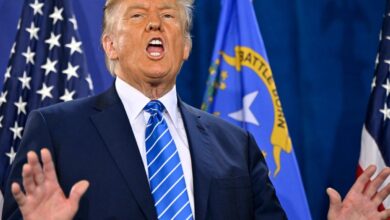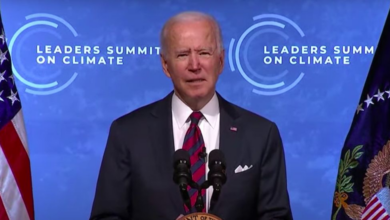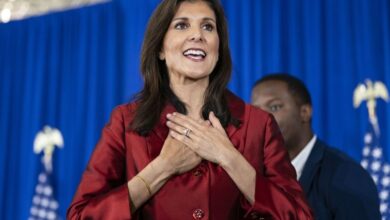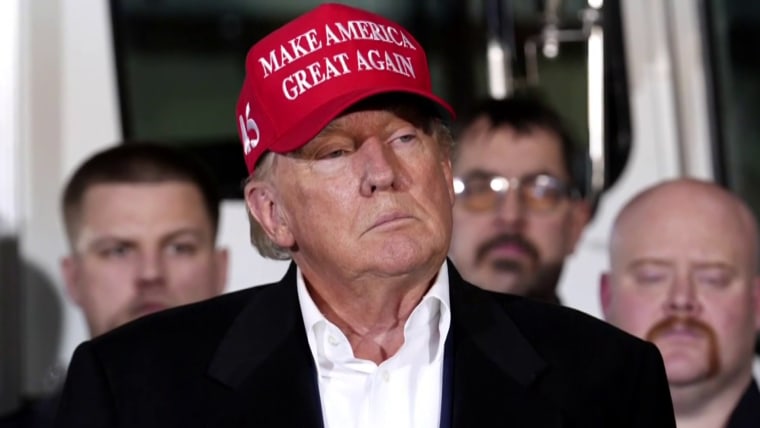
Trump Insurrection Supreme Court A Critical Analysis
Trump insurrection supreme court: Examining the complex interplay between the January 6th insurrection, the Supreme Court’s actions, and the resulting political fallout. This deep dive explores the historical context, legal arguments, and lasting implications of this pivotal moment in American history.
The January 6th insurrection, fueled by contested election results and political rhetoric, brought the Supreme Court into a unique position. This analysis delves into the court’s role in the lead-up, during, and after the events, considering various perspectives and potential long-term consequences for American democracy.
The Insurrection Event
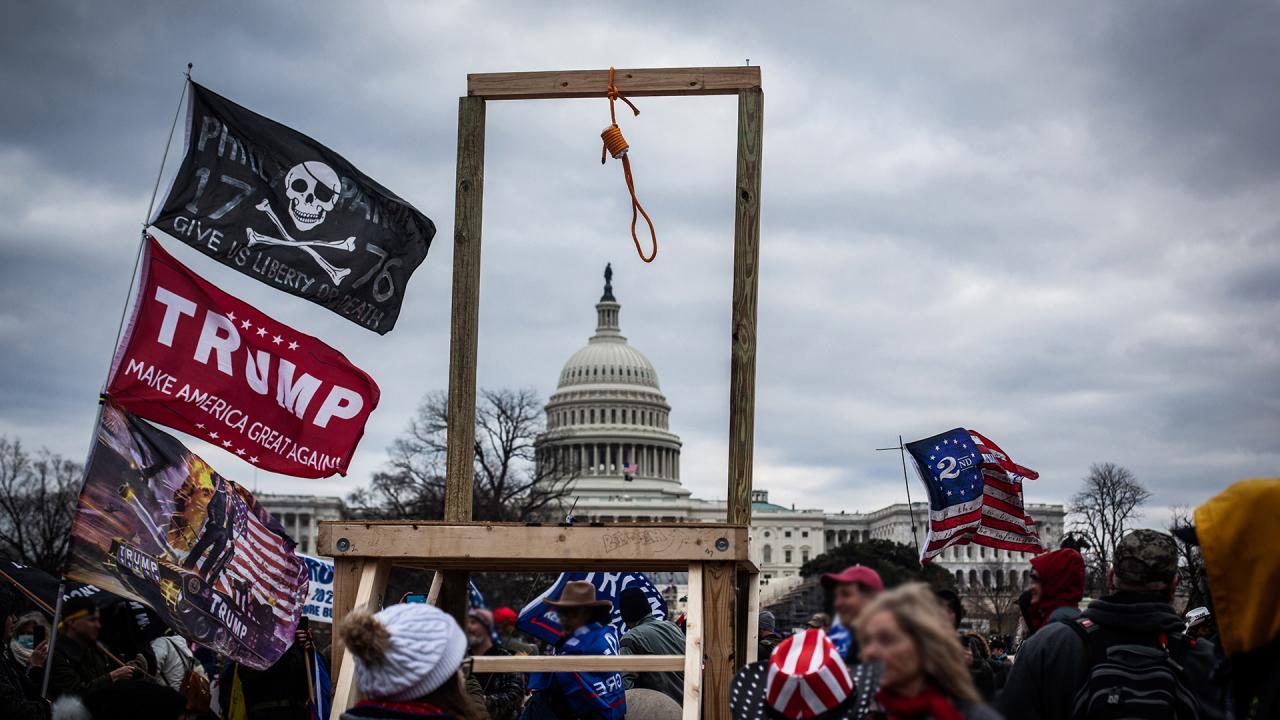
The events surrounding the January 6th, 2021, attack on the United States Capitol Building represent a significant moment in American history. This unprecedented assault on the nation’s democratic institutions followed a contentious presidential election and fueled intense political polarization. Understanding the historical context, key figures, and motivations behind this insurrection is crucial for comprehending its lasting impact.
Historical Context
The 2020 presidential election resulted in a close and contested outcome. Allegations of widespread voter fraud, despite being repeatedly debunked by numerous investigations and courts, circulated widely in certain political circles. These claims fueled a sense of grievance and distrust in the electoral process among a segment of the population. This context of perceived injustice and a deeply divided nation provided a fertile ground for the events that transpired on January 6th.
Key Figures and Groups Involved
Numerous individuals and groups played a role in the January 6th insurrection. Prominent among these were supporters of then-President Donald Trump, who had repeatedly claimed the election was stolen. Right-wing extremist groups and organizations, some with histories of violence, were also heavily involved. Social media played a critical role in mobilizing and coordinating the participants. These groups ranged from individuals acting independently to those organized within specific groups or networks.
Political Motivations
The political motivations behind the January 6th insurrection were primarily centered on the belief that the 2020 presidential election was fraudulent. This belief was amplified by various actors within the political sphere. Supporters of then-President Trump were instrumental in spreading and promoting these claims, which ultimately fueled the attack on the Capitol. A desire to overturn the results of the election and prevent the transfer of power was a key driver.
The Supreme Court’s handling of the Trump insurrection case is fascinating, highlighting the delicate balance between upholding the rule of law and respecting democratic processes. Interestingly, the dwindling snow conditions at St. Moritz’s snow polo events, a tradition linked to climate change, snow polo st moritz climate change , serve as a stark reminder of how environmental shifts can impact deeply rooted cultural traditions, mirroring the long-term consequences of such political events.
Ultimately, the court’s decisions in these cases will undoubtedly shape our future, and how we deal with political upheavals.
Immediate Consequences
The immediate consequences of the January 6th insurrection were profound. The attack on the Capitol disrupted the peaceful transfer of power, a cornerstone of American democracy. The event led to significant political fallout, including the impeachment of then-President Trump and investigations into the individuals and groups involved. Furthermore, it severely damaged public trust in the political system and highlighted the deep divisions within American society.
The Supreme Court’s handling of the Trump insurrection case is definitely a hot topic, but it’s also interesting to see how that plays out alongside the political landscape. For example, the upcoming Nevada caucus primary is shaping up to be a significant event, with a lot of potential implications. To get a better understanding of the dynamics, check out this explainer on the Nevada caucus primary nevada caucus primary explainer.
Ultimately, the long-term effects of the Trump insurrection on the Supreme Court remain to be seen.
Perspectives on the Insurrection
| Perspective | Key Arguments | Evidence |
|---|---|---|
| Pro-Insurrection | The 2020 election was rigged and the insurrection was a necessary response to protect American values. | Claims of widespread voter fraud, which were debunked by numerous investigations. Social media posts and rhetoric emphasizing the legitimacy of the insurrection. |
| Anti-Insurrection | The insurrection was a violent attack on American democracy, driven by false claims of election fraud. | Eyewitness accounts of violence and destruction. Legal findings that debunked the claims of election fraud. Statements from law enforcement and political leaders condemning the insurrection. |
| Neutral/Balanced | The events of January 6th were a complex and deeply troubling episode, driven by a confluence of factors. | Acknowledges both the grievances and the violence of the insurrection. Acknowledges the significant role of political polarization and misinformation. |
The Role of the Supreme Court: Trump Insurrection Supreme Court
The Supreme Court, as the highest judicial body in the United States, plays a crucial role in shaping the nation’s legal landscape. Its interpretations of the Constitution and its application of laws significantly influence the political climate, often sparking debate and discussion. Understanding its actions and pronouncements during periods of heightened political tension, such as the lead-up to and aftermath of the insurrection, is essential for a comprehensive understanding of the events.The Supreme Court’s authority extends to interpreting the Constitution and federal laws, impacting the application of these principles in various contexts, including elections and protests.
Its decisions can have profound effects on the political landscape, influencing the behavior of government branches and public opinion. The Court’s position on issues related to the insurrection, such as free speech and the right to protest, further demonstrates the interplay between the judicial branch and the political sphere.
Supreme Court Actions Regarding the Election
The Supreme Court’s role in the lead-up to the insurrection involved several key aspects of the election process. While no major decisions directly addressing the election results were made by the Court, various legal challenges were presented to the Supreme Court. These challenges, largely focusing on voter eligibility and election procedures, were addressed and dismissed, often due to lack of sufficient evidence or legal merit.
The Court’s actions in these cases significantly shaped the legal narrative surrounding the election.
Potential Influence on the Political Climate
The Supreme Court’s actions, or lack thereof, during the period preceding the insurrection undoubtedly influenced the political climate. The Court’s decisions, or the absence of decisive rulings on election-related disputes, could have created a sense of uncertainty and legal ambiguity. The potential for legal challenges and the outcomes of these challenges were closely monitored by political actors and the public.
This scrutiny, in turn, could have contributed to heightened political tensions. The Court’s position on issues like free speech, as interpreted in the context of the insurrection, further affected the political environment.
Court’s Position on Issues Relevant to the Insurrection
The Supreme Court’s position on issues directly relevant to the insurrection, particularly the right to protest and free speech, was not definitively articulated in decisions made during that time. However, the Court’s established precedent regarding these rights provided a framework for understanding the legal implications of the events. The Court’s past decisions on similar matters, including the limits of free speech and the conditions under which protests could be considered lawful, likely played a role in shaping the legal landscape of the events leading to the insurrection.
The Supreme Court’s handling of the Trump insurrection case is definitely a hot topic. But it’s worth considering how deference to corporate interests, like those of Koch Industries and Chevron, might have played a role in shaping the court’s decisions. For instance, examining the history of koch chevron deference supreme court reveals a pattern of potentially biased rulings that could indirectly influence how the Court approached the Trump insurrection.
Ultimately, the Trump insurrection case is a complex issue, and it’s crucial to understand the broader context of judicial decision-making when trying to grasp the whole picture.
Legal Arguments Related to the Insurrection
The insurrection was a complex event with numerous legal arguments surrounding it. The arguments focused on the constitutionality of actions taken, the validity of claims of election fraud, and the scope of First Amendment rights. These arguments often conflicted, creating a multifaceted legal landscape.
The Supreme Court’s handling of the Trump insurrection case is certainly a hot topic, but it’s interesting to see how that plays out against the backdrop of the New Hampshire Democratic primary results. Results new Hampshire democratic primary are showing some shifting dynamics in the party. Regardless of the primary results, the Trump insurrection case still looms large, highlighting the ongoing political tensions.
| Argument | Supporting Points | Counterarguments |
|---|---|---|
| Claims of widespread election fraud | Allegations of irregularities in voting procedures, voter fraud, and manipulated election results. | Lack of credible evidence to support claims of widespread fraud. Extensive audits and recounts did not substantiate these claims. |
| The right to protest | The First Amendment guarantees the right to protest. | The exercise of this right must not infringe on the rights of others or violate laws prohibiting violence or destruction of property. |
| The scope of executive power | Arguments that the executive branch had the authority to act to rectify election outcomes. | Arguments that the executive branch’s actions exceeded constitutional authority and violated the separation of powers. |
Intersection of the Insurrection and the Supreme Court
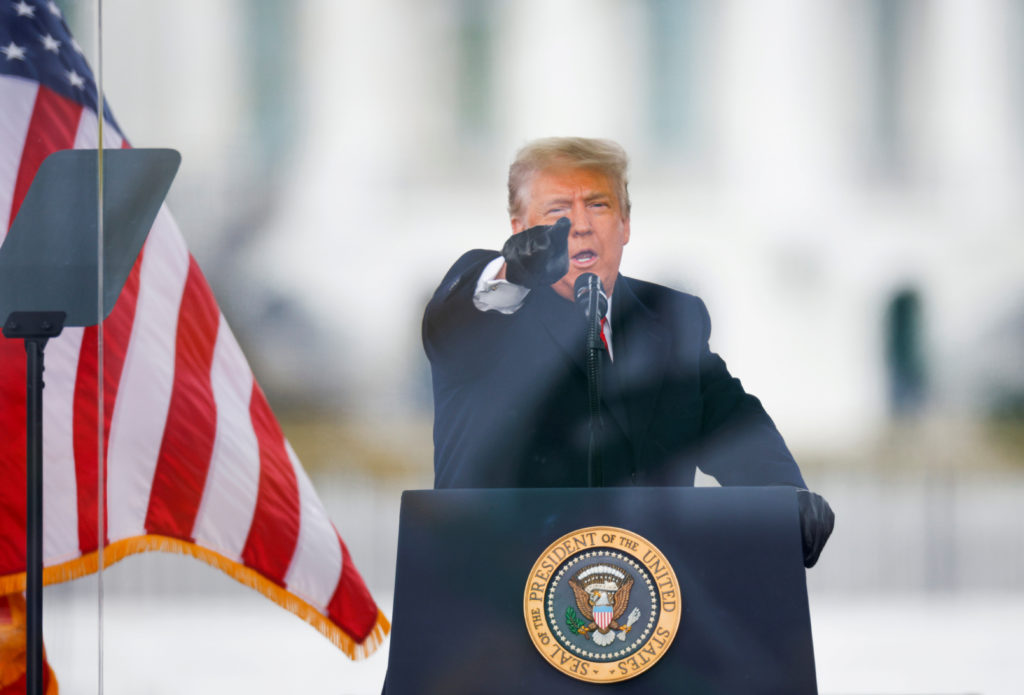
The January 6th insurrection, a pivotal moment in American history, unfolded against a backdrop of legal and political maneuvering, including the Supreme Court’s role in shaping the narrative. Examining the court’s actions and inactions surrounding this event illuminates the intricate interplay between judicial authority and the tumultuous political climate. Understanding the Supreme Court’s stance during this period provides crucial context for analyzing the motivations and reactions of various groups.The Supreme Court, a branch of government charged with interpreting the Constitution, did not directly intervene in the events of January 6th.
However, its prior rulings and existing precedents indirectly influenced the political atmosphere leading up to and following the insurrection. The court’s role in upholding or challenging certain laws and interpretations had an undeniable effect on the actions of individuals and groups. Analyzing the court’s response, or lack thereof, to this event, requires understanding its historical perspective and its relationship to similar events.
Supreme Court Rulings and Precedents Leading Up to the Insurrection
Prior Supreme Court decisions regarding free speech, assembly, and the role of the executive branch shaped the legal landscape surrounding the insurrection. These rulings established parameters for how the government could respond to public protests and demonstrations. Examining these precedents reveals a nuanced understanding of how existing legal frameworks influenced the events of January 6th.
Impact of the Supreme Court’s Actions or Inactions on the Insurrection
The Supreme Court’s approach to the insurrection was not one of direct intervention but of indirect influence. Its past decisions on related topics played a significant role in shaping the perception of the event. For instance, prior rulings on the limits of free speech and assembly, along with how the court had addressed similar political protests, could be seen to have contributed to the atmosphere of the insurrection.
A critical evaluation of the court’s past precedents reveals how they could have been interpreted and utilized by various groups.
Timeline of Events Connecting the Supreme Court, the Insurrection, and Political Decisions
A timeline illustrating the sequence of events connecting Supreme Court decisions, the insurrection, and subsequent political actions helps to understand the chain of causality. This analysis demonstrates how the court’s past actions influenced the unfolding events of January 6th and the reactions of different political actors. A detailed chronological account reveals the influence of legal precedent on the events.
- 2020 Election: Supreme Court rulings on election-related challenges shaped the legal environment surrounding the election. This directly impacted the perception of the election process by various groups, influencing their reactions and actions in the following months.
- January 6th Insurrection: The events of January 6th transpired, and the Supreme Court did not directly intervene.
- Post-Insurrection Investigations and Trials: Following the insurrection, various investigations and trials addressed the legal ramifications of the events. These actions demonstrated how the legal system responded to the insurrection. Different groups reacted based on their interpretations of the events and the judicial response.
Comparison of Supreme Court Responses to the Insurrection and Other Similar Events
A comparative analysis of the Supreme Court’s response to the January 6th insurrection and other similar events reveals patterns and distinctions. Understanding the similarities and differences highlights the unique context surrounding the insurrection. This comparative approach allows for a more comprehensive understanding of the Supreme Court’s role.
The Trump insurrection at the Capitol, and the Supreme Court’s role in the aftermath, are definitely a complex topic. It’s fascinating how these events, despite their political weight, can sometimes intersect with seemingly unrelated areas. For example, the incredible career of Adrian Beltre, a Texas Rangers legend, and his path to the Hall of Fame, offers a different perspective on American history.
It’s hard to ignore the larger themes surrounding the Trump insurrection, even when considering such figures as Adrian Beltre hall of fame Texas Rangers. Ultimately, the Trump insurrection’s legacy continues to shape our political landscape.
- Past Responses to Protests: The Supreme Court has historically addressed protests and demonstrations. The approach taken in each instance can be analyzed to identify similarities and differences with the response to the insurrection.
- Unique Context of the Insurrection: The January 6th insurrection differed from other similar events in several aspects. The political climate surrounding the insurrection was particularly charged, influencing the court’s indirect involvement.
Table Comparing Political Reactions to the Insurrection and the Supreme Court’s Involvement
This table provides a concise overview of political reactions to the insurrection and the Supreme Court’s role.
| Reaction | Affected Groups | Rationale |
|---|---|---|
| Support for the Insurrection | Certain political factions | Belief in the legitimacy of the claims made by the protestors |
| Opposition to the Insurrection | Widespread political opposition | Condemnation of violence and disruption of democratic processes |
| Scrutiny of the Supreme Court’s actions | Public opinion and political analysts | Examination of the court’s response and its possible influence on the events |
Public Perception and Discourse
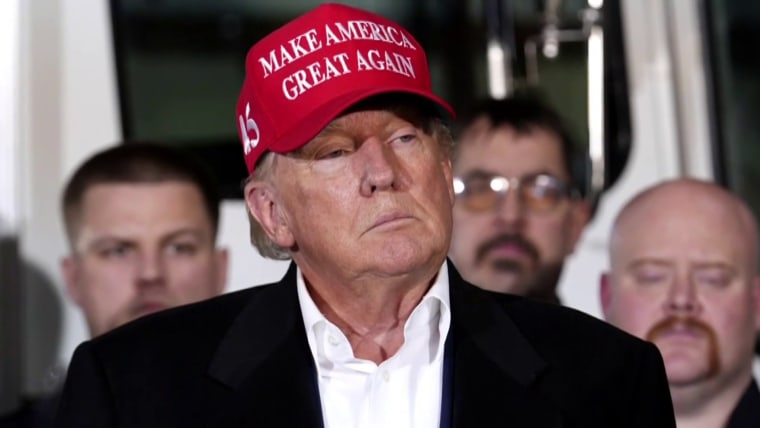
The aftermath of the insurrection and the Supreme Court’s perceived role in the events surrounding it sparked a wide range of public opinions and interpretations. Different segments of the population reacted in diverse ways, reflecting pre-existing political affiliations, personal experiences, and varying levels of trust in institutions. These differing viewpoints shaped the public discourse, often leading to polarized discussions and debates.Public understanding of the Supreme Court’s involvement was significantly influenced by the media’s coverage, social media’s role in disseminating information, and the diverse interpretations of the legal and political ramifications.
This analysis will explore the nuances of public discourse, examining the varied perspectives on the insurrection and their relation to the Supreme Court’s actions.
Diverse Interpretations of the Supreme Court’s Role
Different groups held contrasting views on the Supreme Court’s role during and after the insurrection. Some believed the Court had a responsibility to uphold the Constitution and maintain order, while others saw it as politically biased. Those who supported the Court emphasized its role in upholding the rule of law, pointing to its historical precedent and established legal procedures.
Conversely, those critical of the Court’s perceived actions suggested political motivations or a lack of impartiality.
Different Perspectives on the Insurrection and Their Relation to the Supreme Court
Public perception of the insurrection varied greatly. Some viewed it as an assault on democratic institutions, directly challenging the legitimacy of the Supreme Court and the entire system. Others interpreted the events as a legitimate expression of political dissent, with the Supreme Court serving as a focal point for their grievances. The differing interpretations of the insurrection’s motivations and the Supreme Court’s role created a complex and often contradictory public discourse.
Media Coverage of the Insurrection and the Supreme Court’s Involvement
Media outlets employed diverse approaches in their coverage, reflecting their respective political leanings and editorial stances. Some outlets focused on the legal aspects of the insurrection, emphasizing the role of the Supreme Court in upholding the rule of law. Others framed the events as a political crisis, highlighting the Supreme Court’s perceived political motivations. The varying styles and emphases of these different media outlets contributed significantly to the diverse public perception.
Impact of Social Media on Shaping Public Opinion
Social media played a significant role in shaping public opinion on the insurrection and the Supreme Court’s involvement. The rapid dissemination of information, often unverified or selectively presented, contributed to the polarization of public discourse. Social media platforms facilitated the sharing of diverse viewpoints and opinions, but also amplified misinformation and fueled heated debates, further complicating the already complex public perception.
Table Comparing and Contrasting Media Coverage
| Media Outlet | Perspective | Coverage Style |
|---|---|---|
| News Channel A (conservative) | The insurrection was a legitimate expression of political dissent. The Supreme Court’s role was portrayed as neutral. | Emphasized the political context and downplayed the violence. |
| News Channel B (liberal) | The insurrection was a direct attack on democratic institutions. The Supreme Court’s role was seen as questionable. | Detailed the violence and emphasized the legal ramifications. |
| News Website C (neutral) | Focused on factual reporting. The Supreme Court’s actions were presented without explicit political bias. | Balanced coverage, including different viewpoints. |
Long-Term Implications
The insurrection and the Supreme Court’s response have irrevocably altered the American political landscape, leaving a lasting impact on democracy, public trust, and the future of elections. The events of January 6th, 2021, and the subsequent legal and political fallout exposed deep divisions within the nation and challenged the very foundations of democratic governance. The Court’s role in these events became a focal point of national debate, shaping the public’s perception of the judiciary’s impartiality and authority.The long-term consequences of the insurrection extend beyond the immediate political aftermath.
The erosion of public trust in institutions, including the judiciary, is a significant concern. The events have profoundly reshaped the political discourse, influencing policy debates and shaping the electorate’s expectations of the government. The future of elections, and the judiciary’s role in safeguarding them, is uncertain, and the potential for future challenges remains a significant concern.
Impact on American Democracy, Trump insurrection supreme court
The insurrection directly challenged the peaceful transfer of power, a cornerstone of American democracy. The attempted disruption of the electoral process highlighted the fragility of democratic institutions and the potential for future attempts to undermine elections. The ensuing legal battles and political maneuvering surrounding the events further complicated the process, creating a climate of distrust and uncertainty. This experience serves as a stark reminder of the need for vigilance and robust democratic safeguards.
Changes in Public Perception of the Supreme Court
The Supreme Court’s response to the insurrection, or lack thereof, became a critical element in public perception. Public trust in the Court’s impartiality and authority was significantly tested. The events raised concerns about the potential for political influence on judicial decisions and the Court’s ability to uphold the rule of law in the face of political pressure. The perception of the Court as an independent and neutral arbiter was severely challenged.
Potential Future Impacts on Elections and the Judiciary
The insurrection and the Supreme Court’s actions have set a precedent for future political disputes and challenges to elections. The legal battles surrounding the election results and the Court’s role in addressing these challenges have raised questions about the judiciary’s ability to mediate such conflicts effectively and impartially in the future. This will undoubtedly influence future political strategies and electoral outcomes.
The public’s reaction to these events may shape future legislative efforts to strengthen election security and define the boundaries of judicial intervention in political matters.
Legislative Changes and Public Discussions
Numerous legislative changes and public discussions have been spurred by the insurrection and the Supreme Court’s response. Discussions about election security, campaign finance reform, and the role of social media in political discourse have become increasingly prominent. These discussions are indicative of the profound impact these events have had on the political landscape and the public’s perception of governance.
Potential Future Scenarios
| Scenario | Key Factors | Potential Outcomes |
|---|---|---|
| Increased Polarization | Deepening political divisions, heightened distrust in institutions | Further erosion of public trust, decreased political cooperation, increased legislative gridlock. |
| Strengthened Democratic Safeguards | Increased legislative efforts to secure elections, enhanced oversight of political actors | Greater resilience of democratic institutions, improved public trust, but potential for increased political scrutiny and debate. |
| Judicial Activism or Restraint | Shifting public and political views regarding the judiciary’s role | Increased scrutiny of judicial decisions, potential for politicization of the judiciary or greater emphasis on judicial restraint. |
Conclusion
In conclusion, the intersection of the Trump insurrection and the Supreme Court reveals a crucial moment in American political history. The court’s actions and inactions, alongside public discourse and media coverage, shaped the aftermath and continue to resonate today. This analysis highlights the intricate relationship between the judiciary, the executive branch, and the American people, emphasizing the importance of understanding the historical context to evaluate future actions.
FAQ Guide
What was the Supreme Court’s official response to the insurrection?
The Supreme Court did not directly address the insurrection itself. While there were prior cases regarding election challenges, the court’s role in the immediate events was limited to existing legal frameworks and processes.
How did social media influence public opinion regarding the insurrection and the Supreme Court?
Social media played a significant role in amplifying diverse opinions and interpretations of the events, shaping public discourse and perceptions about the insurrection and the Supreme Court’s involvement.
What were the key legal arguments related to the insurrection?
Legal arguments surrounding the insurrection revolved around issues like free speech, the right to protest, and the validity of election challenges. These arguments were complex and multifaceted.
How did the different media outlets cover the insurrection and the Supreme Court’s role?
Media coverage varied significantly, reflecting different political perspectives and priorities. Some outlets focused on the insurrection’s impact, others on the Supreme Court’s involvement, while still others presented a combined narrative.

